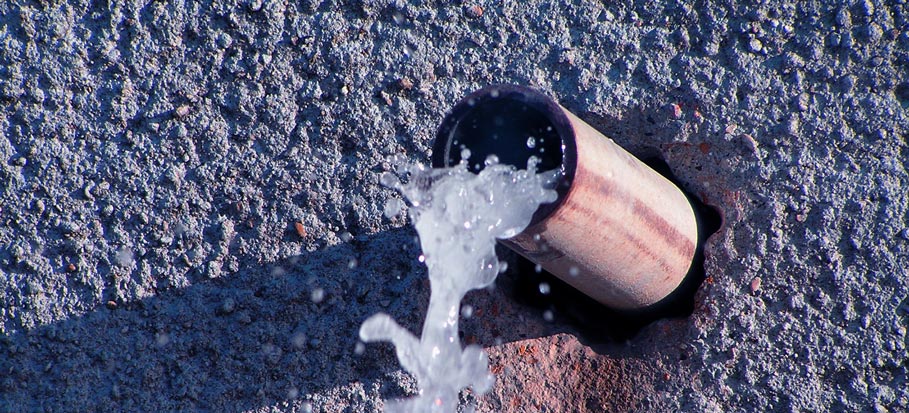Just how to Check If Your House Has a Hidden Leak
Just how to Check If Your House Has a Hidden Leak
Blog Article
We've come across this article about Detecting hidden plumbing leaks down the page on the net and believe it made sense to discuss it with you on this site.

Early discovery of leaking water lines can reduce a potential calamity. Besides saving you cash, it will certainly decrease the worry and also frustration. The moment you discover a leakage, calling your plumber for fixings is the most effective service. However, some small water leaks might not be visible. If you can not discover it with your nude eyes, right here are some hacks that assist.
1. Analyze the Water Meter
Every residence has a water meter. Examining it is a guaranteed way that assists you uncover leaks. For beginners, switch off all the water sources. Make sure no person will certainly flush, utilize the tap, shower, run the washing device or dishwasher. From there, go to the meter and also watch if it will alter. Since nobody is utilizing it, there should be no motions. If it relocates, that indicates a fast-moving leakage. If you discover no changes, wait a hr or two and also inspect back once again. This means you might have a slow leak that might also be underground.
2. Inspect Water Consumption
If you identify unexpected modifications, regardless of your usage being the very same, it implies that you have leakages in your plumbing system. A sudden spike in your expense indicates a fast-moving leakage.
At the same time, a steady boost every month, even with the same habits, shows you have a slow leakage that's additionally gradually intensifying. Call a plumber to thoroughly inspect your residential property, especially if you feel a warm area on your flooring with piping underneath.
3. Do a Food Coloring Examination
When it comes to water intake, 30% comes from bathrooms. If the shade somehow infiltrates your dish throughout that time without flushing, there's a leak between the container and bowl.
4. Asses Outside Lines
Don't fail to remember to examine your outdoor water lines too. Must water permeate out of the link, you have a loosened rubber gasket. One tiny leakage can squander bunches of water as well as spike your water expense.
5. Evaluate and Assess the Situation
Property owners should make it a behavior to check under the sink counters and also even inside cabinets for any type of bad odor or mold growth. These two warnings show a leak so prompt interest is called for. Doing routine examinations, even bi-annually, can save you from a significant problem.
Examine for discolorations as well as weakening as most pipelines and appliances have a life span. If you believe leaking water lines in your plumbing system, do not wait for it to rise.
Early discovery of leaking water lines can alleviate a potential catastrophe. Some little water leakages may not be visible. Checking it is a guaranteed means that aids you discover leakages. One small leak can lose lots of water and also increase your water expense.
If you believe dripping water lines in your plumbing system, don't wait for it to intensify.
WARNING SIGNS OF WATER LEAKAGE BEHIND THE WALL
PERSISTENT MUSTY ODORS
As water slowly drips from a leaky pipe inside the wall, flooring and sheetrock stay damp and develop an odor similar to wet cardboard. It generates a musty smell that can help you find hidden leaks.
MOLD IN UNUSUAL AREAS
Mold usually grows in wet areas like kitchens, baths and laundry rooms. If you spot the stuff on walls or baseboards in other rooms of the house, it’s a good indicator of undetected water leaks.
STAINS THAT GROW
When mold thrives around a leaky pipe, it sometimes takes hold on the inside surface of the affected wall. A growing stain on otherwise clean sheetrock is often your sign of a hidden plumbing problem.
PEELING OR BUBBLING WALLPAPER / PAINT
This clue is easy to miss in rooms that don’t get much use. When you see wallpaper separating along seams or paint bubbling or flaking off the wall, blame sheetrock that stays wet because of an undetected leak.
BUCKLED CEILINGS AND STAINED FLOORS
If ceilings or floors in bathrooms, kitchens or laundry areas develop structural problems, don’t rule out constant damp inside the walls. Wet sheetrock can affect adjacent framing, flooring and ceilings.
https://www.servicemasterbyzaba.com/blog/how-to-detect-water-leakage-in-walls/

Do you enjoy reading up on Leaking water lines? Leave a remark down below. We will be glad to find out your ideas about this write up. Hoping to see you back again in the near future. Sharing is caring. You won't know, you will be helping someone out. I treasure reading our article about Top leak detection hacks.
Report this page